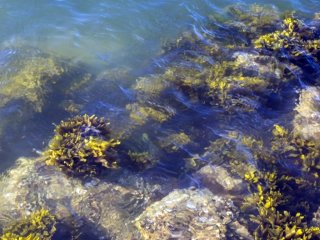Subtidal Habitat, Eelgrass and Oyster Reef Restoration
Return to: Program Priorities | About the Program
Why is this a San Francisco Bay Program Priority?

Subtidal ecosystems are where many shellfish, invertebrates, fish, marine mammals, diving ducks, and other wildlife feed, rest, hide, and reproduce. Native oysters can form reefs that filter nutrients from the Bay water and are a food source for fish and birds. Eelgrass in shallow areas depends on light filtration to grow and when present in large acreages support a wide range of marine life and have the added benefit of stabilizing shorelines by reducing wave energy and preventing erosion of sediments.
Urbanization of the shoreline and shipping channels areas have significantly reduced native eelgrass beds and other beneficial underwater vegetation . EPA's San Francisco Bay Program works closely with regional partners to achieve the subtidal restoration goals outlined in the Subtidal Habitat Goals Report (pdf).
Some recently funded efforts include the removal of creosote pier pilings and other artificial structures to improve pacific herring, oyster reef, and eelgrass habitat. Larger projects included remediation of contaminated sediment along shorelines and large-scale restoration of damaged eelgrass habitat.
